#Steve Meretzky
Text
One of my A Mind Forever Voyaging pieces got mentioned in Critical Distance's "2023 in videogame blogging." Don't see a lot of text game writing out there in mainstream video game discourse. Feels good!
It has a Kierkegaard quote and everything, very classy.
19 notes
·
View notes
Text

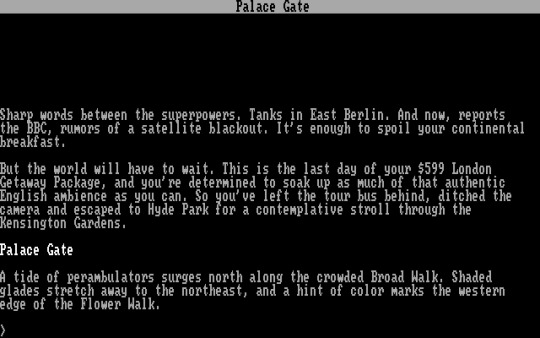
Trinity (PC)
Developed/Published by: Infocom
Released: 9/5/1986
Completed: 18/08/2023
Completion: Finished it. 100/100.
Trophies / Achievements: n/a
Oppenheimer fever has long subsided by the time you’re reading this, and to be fair, had subsided by the time I finally booted up Trinity, but it was seeing Christopher Nolan’s surprisingly human film in 70mm IMAX that led to me skipping forward a few months in 1986 to play this, Infocom and Brian Moriarty’s attempt to grapple with the history of the atomic bomb from the context of the ongoing cold war (although by 1986 it was beginning to thaw, with Mikhail Gorbachev in power and Reagan already three years out from having his mind significantly changed by a screening of The Day After.)
Trinity in many ways is a companion to Steve Meretzky’s A Mind Forever Voyaging, in that it accepts that all art is political and is trying to be something deeper than even Infocom have attempted. But it also stands in contrast to it: A Mind Forever Voyaging is essentially puzzle-less and “realistic” whereas Trinity is absolutely an adventure game, packed with puzzles and fantasy locations.
Both games have their proponents and detractors (The Digital Antiquarian, interestingly, is a Trinity man) but I’ll be honest: for me, there’s probably a middle-ground that I’d like a bit more. Because Trinity falls into the major problem that I always seem to have with Infocom games: you don’t know what to do, or why you would do it.
It is, absolutely, the fact that I’m playing these in my spare time in 2023 rather than, you know, having put down the equivalent of $100 or whatever in 1986 to get a box with a lot of fun stuff in it, but I often wonder: did Infocom’s “Imps” simply believe players can and should work out what they’re supposed to be doing by repeated playthroughs, trial and error, failure, or was it the kind of thing that simply never occurred to them?
I supposed I’m being slightly unfair to Trinity. The game, after all, does begin with a simple vignette (you’re on holiday in London, trying to enjoy a day in Kensington Gardens before a nuke gets dropped on you/it–though you don’t know that yet) where you will quickly be driven to chase a roadrunner because… well, I guess because he’s there. It’s really only once you’re transported to a magical fantasy land full of mushrooms that you are faced with a complete lack of understanding.
Would it really have been so hard to express to the player what they’re trying to do? When I look at it… maybe. You see, in Trinity, you’re actually trying to travel to the famous Trinity experiment in order to… fiddle with the test so it… goes… right? It’s not exactly clear what the intention is, actually, but there’s a fair chance that it relates to something you might know about if you saw Oppenheimer–the theory that the bomb might have began a chain reaction that could not be stopped, igniting the earth’s atmosphere completely. The thesis of Oppenheimer, of course, is that it did, we just don’t know it yet. Trinity does not manage something as thematically clear–in fact, I’m not really sure what it’s saying in the end at all.
Anyway. To get to the experiment, you have to explore the fantasy land and use a sundial to open doors in mushrooms, each of which represents a nuclear explosion (a bit on the nose, but let’s allow it) that has occurred in the past or future (I do rather appreciate the imagery of the fantasy land where the mushrooms starts sparse, but grow into a tremendous forest; it’s rather chilling). This set-up is a bit of a mish-mash of The Hitchhiker’s Guide to the Galaxy with Moriarty’s earlier Wishbringer, and in some ways is the worst of both worlds: you’ve got a big ol’ map with puzzles to solve, but also each vignette needs to be solved, usually requiring things from puzzles you solved in the map. And, of course, you don’t know what any of those things are.
It’s actually rather easy to get to the “end” of the game (as in, the Trinity test site) but it’s unbelievably hard to work out what you’re supposed to do there. There are some really fun and logical puzzles in this (love a puzzle where you just tell someone or something to do something for you and they do it) and also some absolute stinkers, including pulling the old trick where if you look “at” something you’re practically told to ignore it, but if you search it you find something you desperately need. It’s not even logical at times–how was a screwdriver hidden like that???
Yes, this was one where I took a trip to the invisiclues more than I really wanted to, at least once because something I thought should work didn’t (of course, my solution would have ended up with me in a no-win situation because it ruined another item I needed…) and I think after A Mind Forever Voyaging, which is straight-forward both in design and theme, that I didn’t really get Trinity on either level frustrated me somewhat.
Which is not, really, to say that Trinity is bad. If–as I should have–I expected a Brian Moriarty adventure in the style of his previous, Wishbringer (of which I said, “Moriarty is more about giving the player a sense of place and feeling rather than a particularly deep narrative”) I think I’d have been largely fine with this, although still begging for more instruction. I think it’s simply that the whimsy in a context so serious doesn’t work for me here. A noble effort, none the less.
Will I ever play it again? I can’t imagine I would. There’s a time limit and tension to the climax of this that had me having to play it over about four times to get it right and that really wore thin enough I wouldn’t like to do it again.
Final Thought: I reference him fairly frequently but I have to note that The Digital Antiquarian went hog wild for this one writing like seven articles that discuss the atomic age in incredible detail and they’re wonderful context if, really, they only make Trinity’s themes feel ever more tenuous.
Support Every Game I’ve Finished on ko-fi! You can pick up a digital copy of exp. 2600, a zine featuring all-exclusive writing at my shop, or join as a supporter at just $1 a month and get articles like this a week early.
5 notes
·
View notes
Text
Zork World Map (1987) [by Implementor Steve Meretzky]
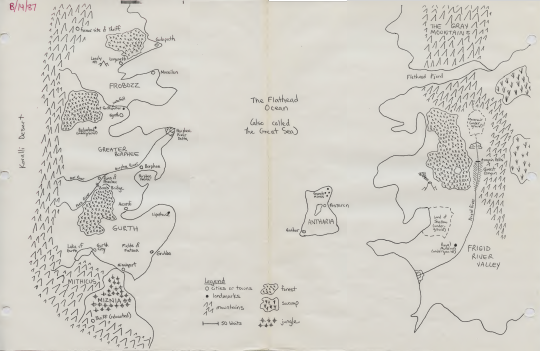
World of Zork (883 GUE) [by Implementor Steve Meretzky]
#zork#retrogaming#retro rpg#retro fantasy#retro computing#ms dos#gaming history#infocom#activision#fantasy worldbuilding#fantasy lore#80s fantasy#80s gaming
9 notes
·
View notes
Text
Game Pile: Planetfall (Kinda)
Planetfall (But Bioshock Infinite, Really)
Watch this video on YouTube
Script and thumbnail below the fold!
What you’re looking at here is footage, such as it is, of the game Planetfall. Planetfall is a text adventure game from 1983, written by Steve Meretzky, and published by the company Infocom. It was available on the Apple II, Atari 8-bit family, the TRS-80 and the IBM PC compatible, which included MS-DOS. Planetfall is a hundred and twenty kilobytes, which is to say, it is about a third of the size of the preview thumbnail file you clicked on to look at this video, which probably didn’t mention Planetfall at all.
Planetfall is an old game, old as balls. It is at this point, forty-one years old. It was made to run on a computer whose entire processing capacity is, to the device screening this, ‘negligible.’
It is also one of the first games to make me cry, when I played it, as a child.
Planetfall is about being a space janitor, eh, eh, yeah, like, if you know you know, but the point is, your space ship crashes, and you find yourself stuck on the planet Resida. You have to use your wits and a stupid amount of trial and error gameplay to construct some form of escape before the planet you’re stuck on blows up, or something like that. While exploring the ruins, you meet Floyd. Floyd is a cute, stupid, helpful little robot that follows you around and provides commentary.
Also, to win the game, you have to ask Floyd to sacrifice his life.
Here’s the passage, in full.
Floyd staggers to the ground, dropping the mini card. He is badly torn apart, with loose wires and broken circuits everywhere. Oil flows from his lubrication system. He obviously has only moments to live.
You drop to your knees and cradle Floyd’s head in your lap. Floyd looks up at his friend with half-open eyes. “Floyd did it… got card. Floyd a good friend, huh?”
Quietly, you sing Floyd’s favourite song, the Ballad of the Starcrossed Miner:
O, they ruled the solar system,
Near ten thousand years before
In their single starcrossed scoutships
Mining asteroids, spinning lore,
Then one true courageous miner
Spied a spaceship from the stars
Boarded he that alien liner
Out beyond the orb of Mars
Yes that ship was filled with danger
Mighty monsters barred his way
Yet he solved the alien myst’ries
Mining quite a lode that day
O, they ruled the solar system
Near ten thousand years before
‘Til one brave advent’rous spirit
Brought that mighty ship to shore
As you finish the last verse, Floyd smiles with contentment, and then his eyes close, as his head rolls to one side. You sit in silence for a moment, in memory of a brave friend who gave his life so that you might live.
I played this game when I was a child, yes, but this passage, where Floyd is okay, and your path forward is only possible if Floyd commits to a course of dangerous action, and then he comes back, and he dies and you have to accept that is deeply affecting. It is a storytelling choice in which your agency is part of the course of story and that you could choose to not do it but you do choose to do it.
Right?
I didn’t.
I never finished Planetfall.
As a kid, I got to this point, I saw this happen, I quit the game and I ran away from ever playing more because of the deeply affecting experience of having a game make me an agent in that kind of moral quandrary, to not just make a sacrifice but to ask someone else to make that sacrifice. It is a good, classic piece of storytelling, and being a videogame, it lets the story situate you as an agent within the whole narrative space, to make you feel the way that the character in the game feels it.
Games are capable of giving us these powerful experiences, they are capable of giving us story experiences that elevate us through our agency, and they are, of course, art.
Glad we solved that, good job, 1983, thanks for clearing things up for all the idiots who think this is a complex question.
Right?
We wouldn’t be constantly in a defensive crouch about ‘art’ for, oh, I dunno, the intervening forty years, including multiple really embarrassing ‘citizen kane of videogame’ moments…?
Right?
Of course I’m not talking about Planetfall.
I’m talking about Bioshock Infinite
[]
Bioshock Infinite is a first-person shooter from Irrational Games, published by 2K and continues the ‘universe’ of the Bioshock games. And… for all that I will speak negatively of this game, for all that this whole piece is going to include some very stern criticisms about it and what it says about us, it is in my opinion, a text worth understanding to consider what we were doing, in videogames, in 2013. The Last Of Us, Bioshock Infinite and Grand Theft Auto were three of the most critically appraised games of the year, and all three of them together weren’t pulling in the money of Puzzle & Dragons, in the same year. A microcosm of gaming, I suppose.
With all readings of a complex text, we are not divining a truth from an author but negotiating an explanation with the media.
When I wrote about Bioshock Infinite back in May of 2013, I had just started university and had some fantasy in my mind about my work being a bridge to working in the games industry. James journalism, I imagined, was waiting for me to present an example of what I could do, and so, I wrote about games with the energy of someone trying to reach that sweet spot of irreverent professionalism, discussing games in terms of pros and cons and the inevitable consideration of a consumer.
At the time I did call the game a modern classic, on par with Spec Ops: The Line. I cringe at that a little, because while it’s true, it’s true in the way that you could remove that description from context and leave with the impression that I think that makes it good. It’s absolutely a classic – you can look at it in the context of the games of its time and it serves as an iconic reduction of so many of the elements that make up what it was to be games in that time and that place. It was also a release in that twilight between the attacks on Anita Sarkeesian and the subsequent distributed campaign we now know in hindsight as ‘gamergate.’
It was in this time that Roger Ebert, a famous film critic who elevated criticism as a type of popular media unto itself, passed away, and we got the now-famous CliffyB Tweet (Cliffy B is his own weird spur in the gaming landscape history, responsible in his youth for contributions to the shareware titles Dare to Dream and Jazz Jackrabbit) about how finally, games had attained the rank of art, a thing that lots of people clowned on. On the one hand, that’s funny because it was a silly thing to say, and at the same time, it’s sad because imagine thinking that games weren’t art until we saw Bioshock Infinite arrive on the scene.
And why Bioshock Infinite?
[]
In my first writing about Bioshock Infinite, I think I was giving it a lot of the benefit of the doubt. It was The Prestige Game and I couldn’t just say a game was bad, right? There were all these people who worked on it. There were all these bits that were good. It took a long process of learning what ‘good game’ even meant, and what I meant when I said it, and in the process, I spent that time discovering realising how much worse a game it was than I appreciated at the time. I eventually came to refer to Bioshock Infinite as a ‘shallow game as high watermark.’ That’s reasonable, I think. It was very much a good example of what gaming, at the time, considered The Way Things Should Be. It’s a centralising game. It induces a conversation around itself. It demands focus.
To talk about Bioshock Infinite and about what it tells us about us, and what it means about its sliver of history in time involves talking about the things that make it up, and a bit about the author, inasmuch as that is a thing that exists. In order to talk about how the world was realised, I need to talk about the setting of the game, and in order to talk about the setting of the game, I’m going to talk about the story that that setting is created to tell. That is, it is necessary to know the story to discuss the setting.
Now I could talk about this as if you already know the story but to write in such a way would be to imagine my entire audience is made up of people who have had to play through this game that is both not very good and ten years old, which for some of you means that you spent some of your precious teenage years and early twenties on this game. And thus, for you, I will tell you the story of Bioshock Infinite, so as to talk about the world of that story.
[]
Now let’s speed-run it.
Fade up, we have a dude, on a boat, with voices in his head, as he approaches a lighthouse with weirdoes in a boat. At first you’re not told much about him, which may lead to you thinking that he’s going to be a mystery blank slate like Jack from Bioshock, but then it turns out his name is Booker DeWitt. He’s here to Deliver the Girl, Wipe Away the Debt. To do this, he climbs the lighthouse, gets in a rocket, and goes to a world in the clouds, gets baptised in a scene that got a single weirdo a refund, and wakes up surrounded by Founding Fathers religious imagery.
What he finds is a land of wonder, but get this, turns out that it’s actually bad, and it’s bad because it’s super racist, and then you get apprehended by the racism cops for not being racist enough (because surely you didn’t join in the racism). What follows then is the standard pattern of Bioshock Infinite, of running from setpiece to setpiece, adding single extra elements to your play experience and the story, punctuated with what I’m going to summarise with ‘stuff,’ meaning combat challenges and some key-hunting or resource scrabbling downtime. You have to find The Girl, stuff, so you do, stuff, and it turns out she’s called Elizabeth and she’s also the best, basically a 90s Disney Princess as people wish they could remember them being rather than a Disney Princess as they actually are (don’t go back and watch those movies it’s a disappointment). Stuff, as Elizabeth wants to go to Paris and you want her to go to not-Paris. Stuff, she and you fight, stuff, set pieces showing you the world of Columbia, the capitalism, the slavery, the backstory of Comstock, Daisy Fitzroy, the leader of the resistance in Columbia, all with stuff, stuff, stuff, some more stuff, and then, dun dun dun, Elizabeth and you start exploring parallel versions of Columbia, where things are different, and there, you get to see different takes on the same world. Don’t worry, they’re not very different, you don’t need to take notes, because stuff, stuff, stuff.
In a parallel world, you see another world’s Daisy, and another world’s resistance, and another world’s slave revolt. Stuff happens and you find out get this, that when the slaves overthrow their owners, they shoot at those former owners! They’re mad! And Daisy, it turns out, is bad because of how she was willing to hurt and kill slavers and the children of slavers and also you because it can’t possibly be that a traumatised former slave responds to a world of violence with violence, it’s gotta be sinister!
Stuff.
More stuff.
Elizabeth is traumatised by this alternate reality’s alternate Daisy and her alternate murder of the alternate resistance while they engage in a completely reasonable anti-slavery revolt. While discussing if maybe they should vote for Hillary, the pair make their way back to where they started, while stuff happens around them. Stuff, Elizabeth is captured, stuff, you recover Elizabeth, stuff, and Elizabeth demands you don’t let her be captured again, in one of the more genuinely badass moments of the story that just uhhhh
uhhhh
this was ten years ago so I think there’s a chance that some of you have fetishes for this now, but don’t worry, it’s fine, he’s her dad, it’s fine
That doesn’t make it better actually nope never mind moving on
Anyway, then there’s more stuff, and stuff, and stuff, and you drown Comstock in a birdbath and you rescue Elizabeth one final time I hope there’s no precedent about her being foiled and used for the advancement of the stories of other boring men, but then you fight the Songbird on a boat and you learn the shocking truth that in fact, you, Booker Dewitt, and Zachary Comstock are the same person, and that Elizabeth is your daughter, but I gave that away already. Then you run out of stuff, you no longer have to fight slaves who are trying to tear down the system that enslaved them and the story reveals that because all of these plot points, and all of this stuff is directly attributed to how Booker handled baptism.
One version of him went ‘oh that’s cool’ and became Zachary Comstock, one part didn’t, and turned into a drunken bum. They’re both the same kind of guy, because they are the same guy. What I’m saying is, we’re not so different, you and I. Elizabeth solves this problem by travelling back in time to when Booker was being baptised, and then a dozen of her drown you. And you drown. Then the credits end and you’re fine and you have the baby back. I guess?
That’s what you get when you play Bioshock Infinite, and it’s important to know at every point when I said ‘stuff’, I was describing something boring and tedious.
[]
That’s the story.
That’s the sequence of events.
This story is important to understanding the world, because you need to know that Bioshock Infinite is a world of multiverses. That the reason it has the music and culture it does is because it was stolen. That the aesthetics of its zeppelins-and-gas-tubes alt-history technofantasy are all woven around a type of extradimensional radio-wave form of Sliders fanfiction.
Knowing that the story is about parallel dimensions and alternate timeline versions of yourself, but it’s really about being a dad who gets murdered by his kid, and really it’s about the character Ken Levine as a writer, everything about the world can be broken down into pieces and examined without the need to step around why things are the way they are. Doing so allows an appreciation for some truly breathtaking amounts of craft.
First up, I’m going to admit to my limitations. I don’t know guns, not deeply. Anything I have to say about the guns in Bioshock Infinite is going to be entirely aesthetic opinions and quotes from the Internet Movie Firearm Database. And you know, something of what you come here for is to have that, to have me process information and present it to you in a way that you find immediately interesting. But in the context of that melange of podcasts and questions and reading, I will say that the guns in Bioshock Infinite represent very good bad guns.
That is to say, the guns in Bioshock Infinite are constructed aesthetically to mirror guns of the period and the technology of the time, altered for a host of reasons. They are very competently animated and designed, if, and this is a big if, you’re willing to accept the ways that guns are so very, very often ‘wrong.’ There are common pitfalls for gun design that are in some cases a response to censorship standards (like, properly representing bullets is supposedly challenging across different cultural boundaries), but in a lot of cases these guns are the nexus between ‘don’t care’ and ‘won’t bother.’ Firing pin marks are missing on bullets for example: This is a simple factual mistake, it’s obvious to anyone who knows about them, and a majority of users will never notice or care.
If you’re willing to accept ‘these guns are bad in the way all guns are bad,’ then these are really high quality examples of guns. Effort has been made to make them visually distinct and interesting, to give them strong character, to have their mechanics play into how they move and fire and occupy space on the screen. I can’t tell you about how good the sounds are. I understand all guns in games are fantastically incorrect because they don’t want to represent the protagonist being deaf in three encounters.
[thanks to Doc Destructo for double checking me here]
[]
I’m also not an architecture student. I’m sure with deeper expertise, I could tell you how the landscapes of Americana presented by Bioshock Infinite aren’t properly accurate, aren’t as excellent as they pretend to be. Thus for so many things: The fashion, the style, the instruments available, the animations of the characters and the accents represented, I cannot attest to them as being ‘realistic’ or ‘correct’ but rather I can tell you that they successfully invoke what they strive to.
There is a deep and whole sense of verisimilitude in the designs of this place. So much so that when I first walked through the streets of Columbia, and heard God Only Knows performed by Barber Shop, that I went:
Oh, huh, I guess that song is an old classic that the Beach boys covered.
Which it isn’t. This was so effective at convincing me that I was just being introduced to retro versions of songs with long histories that it wasn’t until I heard Everybody wants to Rule the World by Tears for Fears that I finally went:
Hang on they’re doing something here.
This is the world of Bioshock Infinite. It is a world full of considerations of vibes, and those vibes are in many cases immaculately constructed. Lines of dialogue are carefully chosen, and delivered by voice actors who elevate the moment to moment experience of the game. There’s a point where Booker and Liz take a moment aside and sing an old Gospel classic – Will the Circle Be Unbroken? – and it’s
amazing.
It’s not even my favourite voice line in the whole thing! There’s this line too, from Cornelius Slate:
You’re not done here, soldier! Eat everything that’s on your plate! Finish it!
Slate is in this situation throwing a rod because he doesn’t remember Comstock from partaking in a Massacre that Slate was doing! And just to be clear, Cornelius Slate is a dude who sucks! He is a bad dude, and the kind of person who’s mad that Comstock wasn’t a real bastard like he claimed to be. And bear in mind, part of that tension was the possibility that Comstock might be part Native American! Like that’s the levels of racism Slate is on!
But damn if that line ain’t delivered great?
There’s an effort to everything in Bioshock Infinite. Promotional trailers, individual outfit designs, varied wall and surface textures, populated physical locales, painting styles, individualised spaces like the toilets are all done with so much work. Work that you kind of can’t spoof or generate – I mean I’m sure there’s generation that was done, deliberately, but there really is no way around recognising that a lot of people who were very good at what they were doing worked very hard on every single surface of what makes up Bioshock Infinite. It was this quality that left me convinced that the game couldn’t be that bad, right? Like, if I called this work bad, wasn’t I in a way criticising the individualised work under the umbrella of criticising this game.
[]
Thing is, uh…
this game needs criticising.
A year after I played Bioshock Infinite, we got the Burial at Sea downloadable content, and that upset me so much I realised that actually, I could have an opinion on the game, that I could look at Bioshock Infinite as a text and series of texts and it wasn’t an act of cruelty or insensitivity to complain about it. The realisation that in fact, a very expensively made project produced by a large studio with a lot of money and hard work in it could in fact completely suck was a big push for me, on the par with realising that it’s entirely possible that even if I understand someone’s position and know how they got there, that doesn’t mean they couldn’t just be wrong.
I was seeing this as a Serious Game that needed to be taken Seriously, and therefore my criticism had to come in terms of these really specific, narrow places, like I had to try and divine a correct opinion out of the experience. Now I’m much more free to say the story’s pretentious and shit and racist and pretty misogynist, and those aren’t ideas that need explaining from first principle as if everyone is a good faith interlocutor.
There are ideas I have from how games work that I built out of my understanding of Bioshock Infinite! I started using terminology here that I still use somewhat; I referred to the level design as fightboxes, a term I still use to describe the same kind of game design that sees combats as things to break out in arenas. The nature of Bioshock Infinite as a fightbox game isn’t really a mark for or against it; it does make the world feel less whole and real, the way that linear path of the game closes off behind you kind of encourages a speedy pace the game doesn’t do a good job of using. Plus, if the main way you engage with the game is with its little boxes of fighting between cutscenes, it highlights how all those guns are boring.
I definitely had Feelings About Booker. I think part of it was the opening chainsawing of a racism cop, and the very real-feeling way I wanted to run through the game and kill everything to rescue Elizabeth that he echoed. I liked the feeling of being a rundown ramshackle mess of a dude who screwed up, related to violence, and could only think of ways to deploy that violence to the world. It jived with me, what can I say. But what sucks about Booker, by the end, is the realisation that he’s just giving up on his situation: He’s not bothering to get good at that relationship to violence, he’s not understanding what violence is or how it relates to people at large. He isn’t trying to fix things, he’s trying to find some way he can suffer enough to make it all go away.
[]
Somewhere between the release of Bioshock Infinite and now I resolved the idea that I should be kind with energy, and cruel with purpose.
I was buying into myths.
A myth that the people working on games are injured by criticising the game they worked on, because people who made a texture aren’t going to see work they didn’t do a great job on and say: ‘hey, why bring that up,’ as opposed to ‘yep, that’s crunch time for ya.’ A myth that marketing and promotion of a mid shooter was incapable of being built on smoke. A myth that games weren’t doing this kind of thing.
Games have been doing this kind of thing for as long as they’ve been making games. Games are always going to have people trying weird stuff, stuff about expressing ideas that are difficult to express in any other way. The year Bioshock Infinite launched, there were a thousand more interesting art games being made and released and shared and played. Itch.io had already launched in March 2013, there were already whole markets of games being weird and interesting and meta-aware and engaging and artistic.
But they didn’t look like Bioshock Infinite. They weren’t released like it. They weren’t presented and platformed and distributed like a AAA product. The myth was that Bioshock Infinite did a single thing new. Even the ways it sucks are boring and old. It’s not even a new sin, just the same old sins, over and over again! Bioshock Infinite is a game insulated from criticism by an assumption of competence!
I feel bad, reading back to my old Bioshock Infinite writing about how I missed a point that I feel is incredibly obvious to start with, an idea that I now, very much hold to be obviously true: Violence in response to violence is not a bad thing. If you are being oppressed, you do not solve that oppression by not being violent. When the revolution arc of Bioshock Infinite presents the slavers being hunted and killed by their slaves, and tries to frame it as ‘going too far’ I should have realised how obviously stupid that is. Those people were complicit in, participants in, a terrible, dreadful crime, and they have it coming. There’s a safe place for those people and it’s on the side of the revolutionaries fighting against slavers.
There was a forking pair of roads before me, as expressed in Bioshock Infinite opinions, and one of them got more radical and more okay with violence and the other might have kept trying for that Games Journalism job that would vaporise the next time the conservatives got in charge and decided to randomly defund the games industry in this country. The opinions I had about a game that I didn’t dislike that much got worse and worse the further I got from them, the more I formed new opinions, informed by knowing more, and knowing better, and being more honest with myself, and more willing to foreground that honesty about myself.
I think violence is a reasonable response to oppression.
[]
Inasmuch as there is a message of Bioshock Infinite it seems to want to warn against violent resistance to anything. It seems, at its heart of hearts, that this story is about how the second you picked up a gun to do something you were already damaged by the idea and the willingness to do violence, because there was no way that the story could pan out that didn’t go too far, even in the name of toppling a fascist slaver state. It is the white liberal dread of any non-incremental change. It is also, to some extent, also a flawed but idealistic father being killed by his child, which is, I mean it is a trend.
And that story is the problem.
Fundamentally, every part of Bioshock Infinite is made well. The fact that it’s full of boring combat against boring enemies to tell a deeply racist story about how slavery is bad but responding badly to being enslaved is just as bad, that’s not about how any part of it is executed, but instead about how the whole thing is executed. This is the stuff that falls to the task of an individual person to oversee the whole project, a sort of director, or producer, or a creative lead, or a head writer. If the work lacks for that kind of individualising mind that can pull things together consistently, then you can get disjointed material.
Someone, one someone, has to be lined up to say ‘this is the work, I am in charge of it, and I made the choices that make it what it is.’
Bioshock Infinite had that.
It had Ken Levine.
Which means that this game as it happened, with all the work done in all the parts of it, was handled to a dude. That dude should have been able to say ‘wow, this gun combat sucks.’ That dude should have been able to say ‘wow, are we saying that people killing their enslavers are going too far?’ That dude should have been able to say, ‘isn’t this story really bad? Isn’t this really boring and tedious and slow and isn’t it kinda weird to have Booker dress his daughter up sexy?’ And yes. Yes, one guy could have. And nobody could have stopped him.
Which means your options are that he was okay with what it wound up being, or, this was the actual choice he made.
Atoms aren’t red. But every red thing you’ve ever seen is made of atoms. You can make a red thing out of things that aren’t red. This project was made out of exquisitely competent pieces, designed to work by people at the top of their game working as hard as they can. And it sucks. The product absolutely sucks. Bioshock Infinite is a deeply incompetent game made entirely out of exquisitely competent parts. Every single part of how this game works is impressively made, down to having an exciting instigating event of chainsawing one of the racism cops in the face.
These pieces were made by hardworking people grinding away at improving 1% of 1% of things to make them perfect and they were put together by a boob.
Games have been art since before we had the word games. Games are art because they’re made by humans and humans scatter art on everything we do, like the glitter of our civilisation.
There’s a reason Planetfall made me cry.
People will tell you that art is about quality or presentation. These are aesthetic traits, these are nice, they are things you can do. But you don’t need this grandeur, this excess, this bombast to be art. In fact, a game from 1983 has the resonance of art and that negotiated experience in a beautiful way that hits so hard and so different because of what you did in it, and it’s ugly text written by a decent sci-fi author on a screen, and all of the slickness and polish and presentation in Bioshock Infinite just concealed the ways in which that game – which is absolutely art! – sucks shit.
Check it out on PRESS.exe to see it with images and links!
0 notes
Text
Yesterday's Copy Protection Schemes - Spellcasting 101: Sorcerers Get All the Girls
Who remembers playing pc games where the importance of getting the main character bedded drove the storyline? Not every titillating game was a winner, but the Spellcasting series by Steve Meretzky certainly were! The quest to get Ernie Eaglebeek hooked up with Lola Tigerbelly, graduate his first year of Sorcerer University, and solve the mystery of what happened to the Sorcerer’s Appliance, made…

View On WordPress
1 note
·
View note
Text

Sorcerer, Show Me The High Life
#spellcasting 101#the sorcerers get all the girls#steve meretzky#legend entertainment#90s video games#1990
22 notes
·
View notes
Photo

From Zork I to Zork 0
Zork Zero, by Infocom In its death throes (Activision would shut down the studio the next year), vaunted text adventure game company Infocom shifted the much-beloved Zork series into the graphical realm with Zork Zero in 1988, designed by longtime Infocom IMP Steve Meretzky (Planetfall, Hitchhiker's Guide to the Galaxy, et al). A prequel to the previous Zork games, Zork Zero would introduce interactive mapping, a rudimentary GUI, in-game hints, interactive encyclopedia (the Encyclopedia Frobozzica) and mini-game to the series, along with... oh yeah, graphics! This was the last Zork game before Infocom was shuttered, and while none of us ever wanted to see Infocom's demise, I guess this is a pretty fine way to go out.
13 notes
·
View notes
Photo
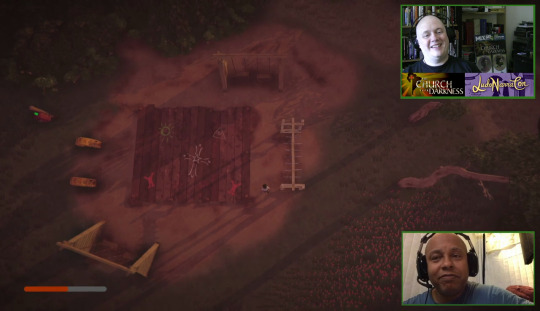
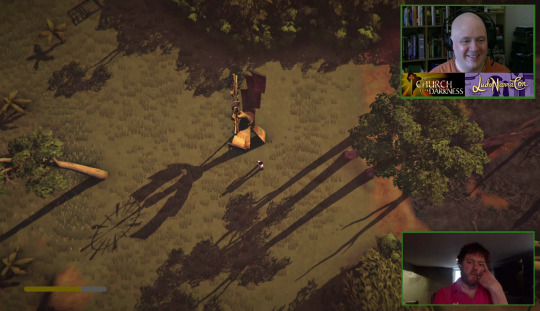
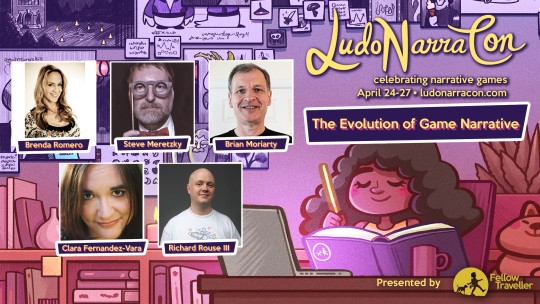
Good day to talk cults?
Three streams we did for LudoNarraCon 2020 are now up on YouTube.
First we have our energetic actor Arif S. Kinchen along with our director Richard Rouse. They talk Arif's work on the game, find secret parts of the cult, hunt for Alex, run away a lot, & even talk The Suffering. So check it out:
https://www.youtube.com/watch?v=BUmG_VV0zNs
Next Richard is joined by Brock Wilbur: journalist, knower of cults, and as it happens a big fan of our game. Brock asks questions about why the game is like it is, while we discuss other cults they find fascinating and just how real the game is. Check them out over here:
https://www.youtube.com/watch?v=_6mT2UFGOaE
And you can also catch Richard not talking cults directly, but rather on a panel featuring several of the guest writers for our game. Join him with the esteemed Steve Meretzky, Brenda Romero, Brian Moriarty, and Clara Ferandez-Vara as they talk the evolution of game narrative, as the discussion focuses on games have tackled serious subject matter over the years.
https://www.youtube.com/watch?v=ZfT9-0He4fM
#LudoNarraCon#Narrative Games#cults#The Church in the Darkness#Arif Kinchen#Arif S. Kinchen#Brock Wilbur#Steve Meretzky#Brenda romero#brian moriarty#Clara Fernandez-Vara#voice acting
2 notes
·
View notes
Photo
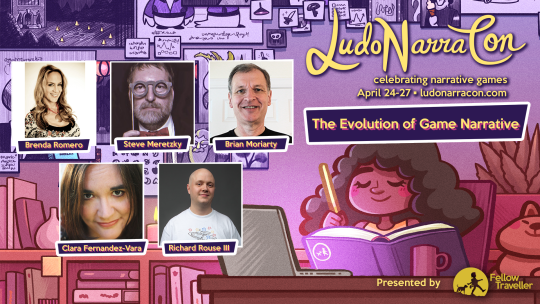
Had lovely talk on the "Evolution of Game Narrative" with a great lineup at #LudoNarraCon2020, including esteemed writer/designers:
Clara Fernandez-Vara
Steve Meretzky
Brian Moriarty
Brenda Romero
and me...
Many great tales were told, many insights shared. Now up on YouTube!
https://www.youtube.com/watch?v=ZfT9-0He4fM
#Brenda Romero#Steve Meretzky#Brian Moriarty#Clara Fernandez-Vara#Infocom#The Hitchhiker's Guide to the Galaxy#Planetfall#loom#trinity#wishibringer#mechanic is the message#game developerment#narrative games#narrative design
2 notes
·
View notes
Text
whew
Gold Machine's ten-part series on A Mind Forever Voyaging ends here. Thanks for following along!
To celebrate moving on to Spellbreaker, I'll type up a let's play over at the Interactive Fiction Community forum. I'll post a link once its up.
1 note
·
View note
Photo
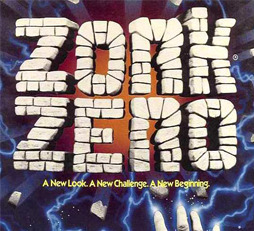




Game Review: Zork Zero
By Steve Meretzky, Infocom (1989)
At the outset, I should confess -- I did not beat this game. The story has you exploring the nearly abandoned castle of the former Flathead dynasty. You must find 24 special objects, place them in a cauldron, and utter the magic words to lift the spell that hangs over the castle. The objects are pretty random: a metronome, a dumbbell, a T-square, etc. And there are a massive number of other objects you will need to solve the game’s puzzles. That is a lot of object management to deal with -- carrying objects back and forth, never knowing which random thing might be needed later on, but of course you aren’t able to carry them all at once. And the game is LONG, and it requires so, so, so much travelling. A clever game device does involve the use of a magic pigeon which can transport you back to places where you have left its perch. This doesn’t just save time, but it’s also part of some puzzles which send you to places which otherwise have no return route.
This game is also hard. Very, very hard. It has both the usual Zork-type puzzles, where a scenario must be managed with the right objects and phrases, as well as self-contained logic puzzles which are illustrated with graphic screens. These puzzles are significantly easier, since you’ve probably played them already as a kid: the Tower of Hanoi, a river-crossing puzzle, Nim, a peg game like the one they have on the tables at Cracker Barrel. Despite the very challenging nature of the gameplay, I was really drawn into the game. The text parser is excellent, so rarely was the challenge caused by syntax guessing. And the game is very funny -- Meretzky was definitely in top snarky form. Nevertheless, when I got to the very end, I must have missed one of the objects, perhaps due to not organizing my save points well enough (because you will be saving and restoring a LOT). And the game had already sucked up so much of my life, I just couldn’t stomach going back and playing through it again. But despite my own failure, it was a good ride, and I give this game 8/10.
#zork zero#game review#infocom#steve meretzky#steven meretzky#text-based game#text game#text based game#interactive fiction
1 note
·
View note
Photo
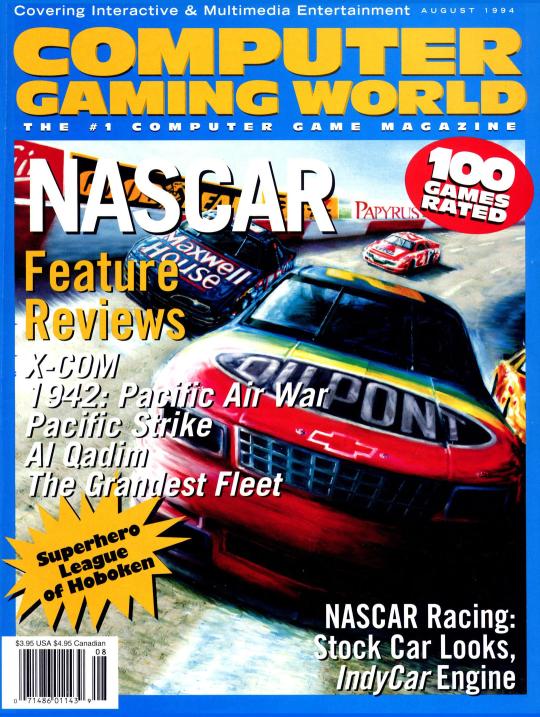
Computer Gaming World August 1994
Behind this issue’s preview of a stock car racing game, there was an article about the latest big thing in computer gaming of taping actors against blue screen and a preview of Infocom alumni Steve Meretzky’s latest game.
3 notes
·
View notes
Link
This warning says it all: "The game will kill you frequently. It's a bit mean like that."
Thirty years ago, Hitchhiker's Guide to the Galaxy author Douglas Adams and Infocom's Steve Meretzky designed an interactive fiction version of the classic work of scifi humor. The game was a huge hit; according to the BBC, it sold 350,000 copies, making it a big seller for 1984.
The BBC updated the game with graphics in 2004, and now has polished up the game once more for a 30th anniversary edition. It retains the wit and gameplay of the original, along with all the devious puzzles and the wicked ways to die. Clear your schedule and prepare for a bit of frustration.
The Hitchhiker's Guide to the Galaxy Game - 30th Anniversary Edition [BBC via Nerdcore]
6 notes
·
View notes
Text
New Episode of Literate Machine!
A Mind Forever Voyaging into Neoliberalism
In 1984, Ronald Reagan won reelection in a landslide and one man responded the only way he knew how: by channeling his horror into a video game. My favorite video game. So let's leap through time as the artificial intelligence Perry Sim and see what A Mind Forever Voyaging tells us about our present moment.
https://literatemachine.com/2020/03/01/a-mind-forever-voyaging-into-neoliberalism-steve-meretzky-and-the-video-game-that-saw-it-all-coming/
2 notes
·
View notes
Photo

Steve Meretzky's Spellcasting 301: Spring Break (DOS), 1992.
#abandonware#gaming#video games#retro games#old games#90s#90s games#adult games#vaporwave#retrowave#aesthetic#pixel art#school#legend entertainment company
44 notes
·
View notes
Text
British Invaders Ep. 349: The Hitchhiker’s Guide to the Galaxy Text Adventure (Part 1)
British Invaders Ep. 349: The Hitchhiker’s Guide to the Galaxy Text Adventure (Part 1)
British Invaders Ep. 349 is the first of a two part examination of The Hitchhiker’s Guide to the Galaxy Text Adventure which was released by Infocom as a “text adventure” computer game in 1984. It was designed by Douglas Adams himself along with Steve Meretzky.
http://britishinvaders.com/episodes/BritInv349HHGGTextAdventure1.mp3
View On WordPress
#British Invaders#Douglas Adams#Steve Meretzky#The Hitchhiker’s Guide to the Galaxy#The Hitchhiker’s Guide to the Galaxy Text Adventure
0 notes